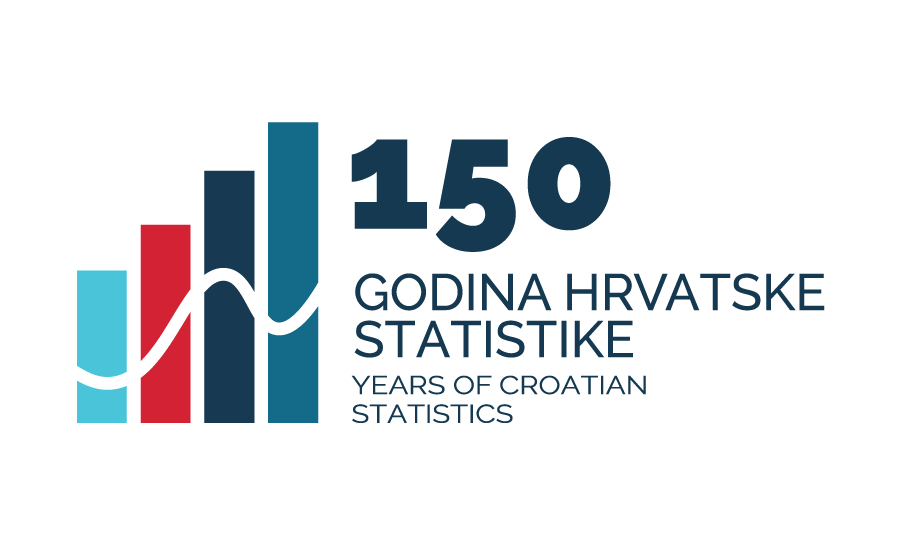First Release
AIR EMISSION ACCOUNTS, 2022 – Provisional Data
The emissions of greenhouse gases and air pollutants are presented for the Republic of Croatia for the period from 2018 to 2022.
The total greenhouse gas emissions into the air decreased in 2022 compared to 2021. Emissions of all air pollutants decreased in 2022 compared to 2021.
In 2022, the largest quantities of greenhouse gas emissions were generated by CO2 emissions (excluding biomass emissions as fuel), 17 901.52 thousand t (Gg), CO2 from biomass, 6 532.67 thousand t (Gg), HFC, 1 812 054.50 t (Mg) in CO2 equivalent, and CH4 135 620.51 t (Mg). Of all pollutants in 2022, CO accounted for the highest share of emissions, 206 796.40 t (Mg).
Final data will be available in the Database on 6 December 2024.
1 AIR EMISSIONS1) |
||||||||||||||||||||||||||||||||||||||||||||||||||||||||||||||||||||||||||||||||||||||||||
1) New, updated national and international emission factors, according to the recommended methodology for the calculation of emissions, are used each year for calculation, which makes the data incomparable with the data from the First Release OEN-2023-1-5. |
NOTES ON METHODOLOGY
Sources and methods of data collection
The data source for air emission accounts is the data compilation of the Croatian Bureau of Statistics and the Ministry of Environmental Protection and Green Transition.
The air emission accounts are one of the several physical modules of Eurostat’s programme of environmental economic accounts. They are covered by Regulation (EU) No 691/2011 of the European Parliament and of the Council of 6 July 2011 on European environmental economic accounts.
Air emission accounts record physical flows of gaseous or particulate materials ("air emissions"), which occur as a result of economic activity (production activities of business entities and activities of private households), as explained in the European System of National Accounts (ESA). They are based on the residence principle.
A basis for air emissions accounting according to economic activities (National Classification of Activities, 2007 version), i.e. according to the residence principle, are data obtained from:
- Reports on greenhouse gas emissions inventory on the territory of the Republic of Croatia according to the UN Framework Convention on Climate Change (UNFCCC) and the Kyoto Protocol,
- Informational report on air pollutants inventory on the territory of the Republic of Croatia according to the Convention on Long-Range Transboundary Air Pollution (CLRTAP) and the Directive on the reduction of national emissions of certain atmospheric pollutants,
- Physical energy flow accounts (PEFA questionnaire).
Differences between air emission accounts and data from official national air emission inventories are reported through bridging items. The difference is caused by implementation of two methodological concepts: residence principle and territorial principle. In accordance with the definition of system boundaries within economy based on the residence principle, air emission accounts at the national level exclude emissions produced by non-residents (e.g., tourists and international carriers), but include emissions produced by resident units abroad. The main source for the calculation of bridging items is the physical energy flow account.
Emissions by economic activities are calculated by using certain national data (data on activities and emissions of direct and indirect greenhouse gases, data from the Environmental Pollution Register, data from the energy balance, data on fluorinated greenhouse gases (F-gases) and data taken over from reports on air emissions of pollutants), which help in linking the source data categories and standard economic classifications.
Definitions
Air emissions are physical flows of gaseous or particulate materials from economy (production or consumption processes) that pollute the atmosphere. Air emissions include emissions of greenhouse gases CO2, N2O, CH4, HFC, PFC and SF6 NF3, as well as emissions of air pollutants NOX, SOX, NH3, NMHOS, CO, PM2.5 and PM10.
| Abbreviations | |
| CH4 | methane |
| CO | carbon monoxide |
| CO2 | carbon dioxide |
| EU | European Union |
| Eurostat | Statistical Office of the European Union |
| Gg | gigagram (1 gigagram = 1 kilotonne) |
| HFC | hydrofluorocarbon |
| Mg | megagram (1 megagram = 1 tonne) |
| NH3 | ammonia |
| N2O | nitrous oxide |
| NMVOC | non-methane volatile organic compounds |
| NOx | nitrogen oxides |
| PFC | perfluorocarbons |
| PM2.5 | particulate matter (less than or equal to a nominal 2.5 microns) |
| PM10 | particulate matter (less than or equal to a nominal 10 microns) |
| SF6 NF3 | sulphur hexafluoride and nitrogen trifluoride |
| SOx | sulphur oxides |
| t | tonne |
| Symbols | |
| 0 | value not zero but less than 0.5 of the unit of measure used |
Published by the Croatian Bureau of Statistics, Zagreb, Ilica 3, P. O. B. 80
Phone: (+385 1) 48 06 111
Press corner: press@dzs.hr
Persons responsible:
Edita Omerzo, Director of Spatial Statistics Directorate
Lidija Brković, Director General
Prepared by:
Darko Jukić, Gordana Lepčević, Željka Kovaček Čuklić and Bernarda Šimunić
USERS ARE KINDLY REQUESTED TO STATE THE SOURCE.
Customer Relations and Data Protection Department
Information and user requests
Phone: (+385 1) 48 06 138, 48 06 154, 48 06 115
E-mail: stat.info@dzs.hr
Subscription
Phone: (+385 1) 21 00 455
E-mail: prodaja@dzs.hr


